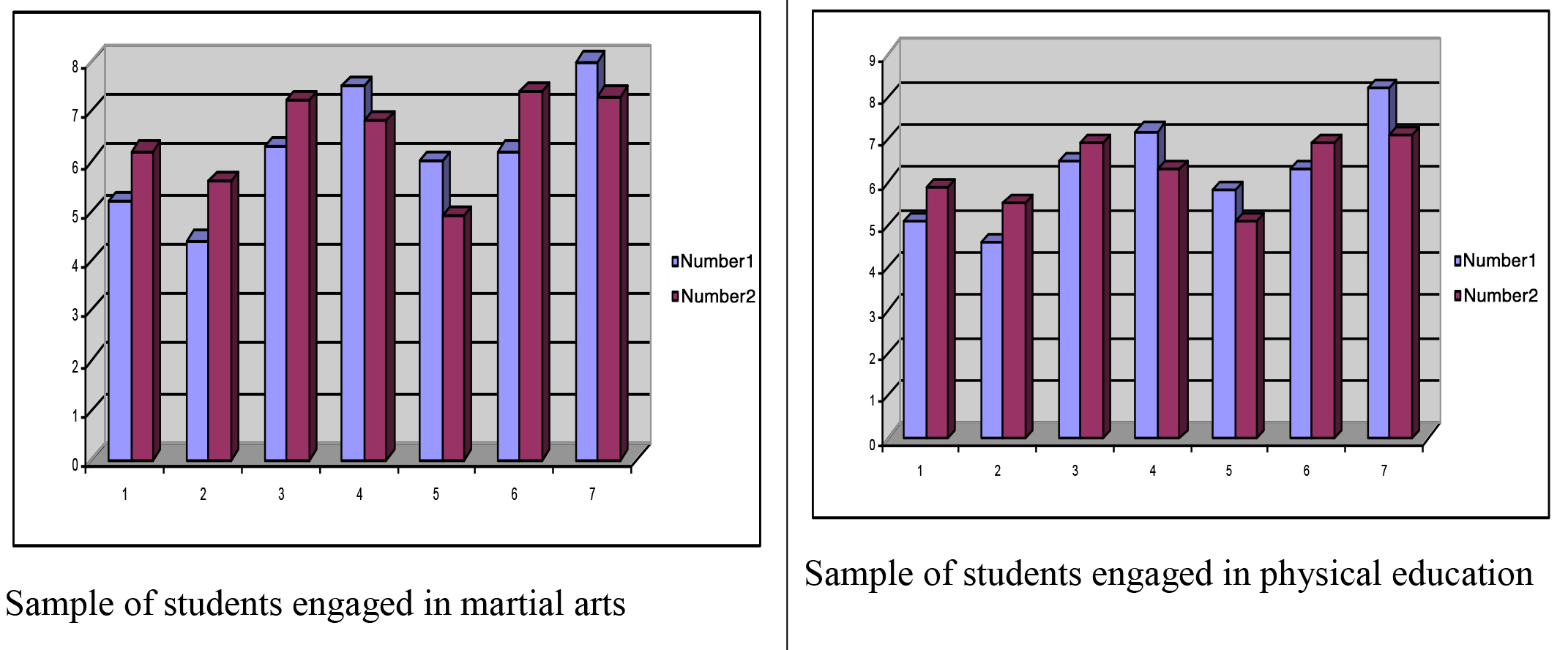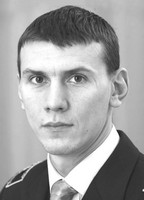Effects of competitive martial arts on first-year students' psychophysiological potential
Фотографии:
ˑ:
Honoured Master of Sport D.S. Savelyev1
PhD, Associate Professor S.A. Sidorenko1
1St. Petersburg Mining University, St. Petersburg
Keywords: psychophysiological potential, students, physical education, martial arts.
Introduction. The issue of person's psychophysiological potential becomes increasingly important in modern environment, which is characterized by strict requirements and ever-changing conditions. Higher education system reform, against the background of socio-economic crises, imposes heightened requirements to the compensatory-adaptive mechanisms in the body of students [5].
Because of the complex situation in general, and health deterioration of the national population, there is a need for the means of permanent restoration of the psychophysiological potential of an individual. One of the most obvious remedies is physical education. The scientific literature contains a great deal of evidence that physical training affects person’s state of health, physical and mental state. There are research works confirming the possibilities of physical education in the sphere of formation of the adaptive potential of students [2, 3, 5], who are exposed to the most severe psychophysiological overloads.
However, the influence of various kinds of physical activity on the psychophysiological potential is poorly studied.
In recent years, one can find the research literature which proved a positive impact of certain types of martial arts (in particular, boxing) on the phenomenon of overall adaptive potential of an individual [1]. So we need an answer to the following question: do martial arts have a positive effect on the formation of the optimal psychophysiological potential?
Objective of the study was to explore the effects of competitive martial arts on the first-year students’ psychophysiological potential.
Methods and structure of the study. We used the modified version of the well-known test for assessing the functional state of an individual by V.A. Doskin "WAM"-"WAMSACE" (modified by A.N. Nikolaev). This methodology makes it possible to assess the manifestation level of not only health, activity and mood, but a number of other states - stress, anxiety, confidence and emotional excitation [4]. According to the instruction, the subjects are to estimate the degree of manifestation of these conditions (the summary indicators were calculated as the arithmetic mean). The instruction wording was as follows: "Evaluate your usual (most typical for you) state".
The study was conducted among the first-year students, and as a result we obtained two segments of data at 3-month interval. Subjects to the study were male students engaged in the traditional academic physical education course under the Physical Education discipline (n = 35) versus students deeply engaged in martial arts (karate and judo, n = 32).
Results and discussion. The findings indicate that, initially, no differences were detected in the level of manifestation of the psychophysiological potential in both samples. The majority of the first-year technical university students are characterized by relatively low activity, average well-being and mood, somewhat increased anxiety and confidence, and a rather high level of stress and emotional excitation. In general, such values testify to an unfavorable state of the psychophysiological potential. This may be due to both "freshman’s adaptation" and other factors - for example, health problems, material problems, etc.
The comparative analysis of the data obtained shows that training according to both of the programs facilitated the optimization of the students’ psychophysiological potential. Nevertheless, the nature of this influence is somewhat different.
Table 1. Psychophysiological potential of students engaged in traditional academic physical education course under Physical Education discipline (max = 11 points)
|
Parameters |
1 test |
2 test |
Difference |
|
|
Х±σ |
Х±σ |
T |
Р |
|
|
Well-being |
5.1±0.6 |
5.9±0.6 |
2.15 |
0.05 |
|
Activity |
4.6±0.5 |
5.5±0.6 |
1.68 |
- |
|
Mood |
6.5±0.7 |
6.9±0.8 |
1.77 |
- |
|
Stress |
7.2±0.8 |
6.3±0.7 |
2.09 |
0.05 |
|
Anxiety |
5.8±0.6 |
5.1±0.5 |
1.59 |
- |
|
Confidence |
6.3±0.6 |
6.9±0.7 |
1.8 |
- |
|
Emotional excitation |
8.2±0.9 |
7.1±0.8 |
2.74 |
0.01 |
Table 2. Psychophysiological potential of students deeply engaged in martial arts (max = 11 points)
|
Parameters |
1 test |
2 test |
Difference |
|
|
Х±σ |
Х±σ |
T |
Р |
|
|
Well-being |
5.2±0.6 |
6.2±0.7 |
2.35 |
0.05 |
|
Activity |
4.7±0.5 |
5.6±0.6 |
2.44 |
0.05 |
|
Mood |
6.4±0.7 |
7.2±0.7 |
2.26 |
0.05 |
|
Stress |
7.5±0.9 |
6.8±0.5 |
1.9 |
- |
|
Anxiety |
6.0±0.7 |
4.9±0.5 |
2.85 |
0.01 |
|
Confidence |
6.2±0.8 |
7.4±0.8 |
2.8 |
0.01 |
|
Emotional excitation |
8.0±0.9 |
7.3±0.7 |
1.85 |
- |
Thus, physical training in compliance with the traditional academic physical education course results in:
- emotional arousal decrease;
- improvement of well-being;
- stress reduction (Table 1).
There was also an increase of the activity, mood, confidence levels and a decrease in the level of anxiety.
The following changes were observed in the sample of students deeply engaged in martial arts:
- their anxiety level decreased;
- the level of confidence increased;
- the activity level increased;
- their well-being improved;
- their mood improved.
In addition, the levels of stress and emotion excitation decreased (Table 2).

Fig. 1. Peculiarities of psychophysiological potential of students engaged in physical education and martial arts
Legend:
1 – well-being, 2 - activity, 3 - mood, 4 - stress, 5 - anxiety, 6 – confidence, 7 – emotional excitation.
Conclusion. The psychophysiological potential of the first-year students at the beginning of their training is characterized by a set of unfavorable tendencies (low activity level, average well-being and mood, increased anxiety, high level of stress and emotional excitation).
Traditional physical education classes contribute to the optimization of students' psychophysiological potential. In this context, martial arts have an advantage, as the degree of optimization of the psychophysiological potential can be assessed as high.
References
- Vitun V.G. Formirovanie adaptatsionnogo potentsiala studentov vuzov v protsesse fizicheskogo vospitaniya. Avtoref. dis. kand. ped. nauk [Formation of university students' adaptive potential during physical education. PhD diss. abstr.]. Magnitogorsk, 2009, 20 p.
- Zaytsev A.V. Vliyanie zanyatiy boksom na adaptatsionny potentsial lichnosti studentov tekhnicheskogo vuza [The effect of boxing classes on personal adaptive potential of technical university students]. Teoriya i praktika fiz. kultury, 2014, no. 6, pp. 13-14.
- Zinov'ev N.A. Formirovanie zdorovogo obraza zhizni studentov tekhnicheskogo vuza v protsesse fizicheskogo vospitaniya [Formation of healthy way of life of technical university students during physical education]. Teoriya i praktika fiz. kultury, 2014, no. 2, pp. 6-9.
- Nikolaev A.N. Metodiki izucheniya lichnosti i deyatelnosti trenera. Uchebno-metod. posobie [Methods of study of coach' personality and activity. Teaching aid]. St. Petersburg: SPb SAPC publ., 2003, 70 p.
- Rudenko G.V., Panchenko I.A. Rol pedagogicheskikh usloviy v protsesse podgotovki spetsialista v vysshey shkole [Teaching conditions in specialist training process in university]. Zapiski gornogo instituta, 2011, vol. 193, pp. 143-146.
- Sorokina M.A. Otsenka psikhofiziologicheskogo potentsiala uchastnikov obrazovatelnogo protsessa v vysshey shkole [Assessment of psycho-physiological potential of those involved in university education process]. Fundamentalnye issledovaniya, 2009, no. 2, pp. 100-101.
Corresponding author: fizkult@teoriya.ru
Abstract
Objective of the study was to explore the effects of competitive martial arts on the first-year students’ psychophysiological potential. Subject to the study were male students engaged in the traditional academic physical education course under the Physical Education discipline versus students deeply engaged in martial arts (karate and judo).
Initial tests of the first-year students showed low mental and physiological functionality rates as verified, among other indicators, by the low physical activity rates versus high stress and emotional excitation rates. An educational experiment under the study generated data on the effects of the traditional versus martial-arts-driven (karate and judo) academic physical education models on the students, the data being interpreted as indicative of the martial arts being efficient in the mental and physiological functionality optimization aspects. The traditional academic physical education was tested to significantly scale down the emotional excitation and stress rates and improve well-being; whereas the martial-arts-driven (karate and judo) academic physical education model was tested to significantly reduce the anxiety rates and increase the confidence and physical activity rates with the positive improvement of the well-being and moods.




 Журнал "THEORY AND PRACTICE
Журнал "THEORY AND PRACTICE